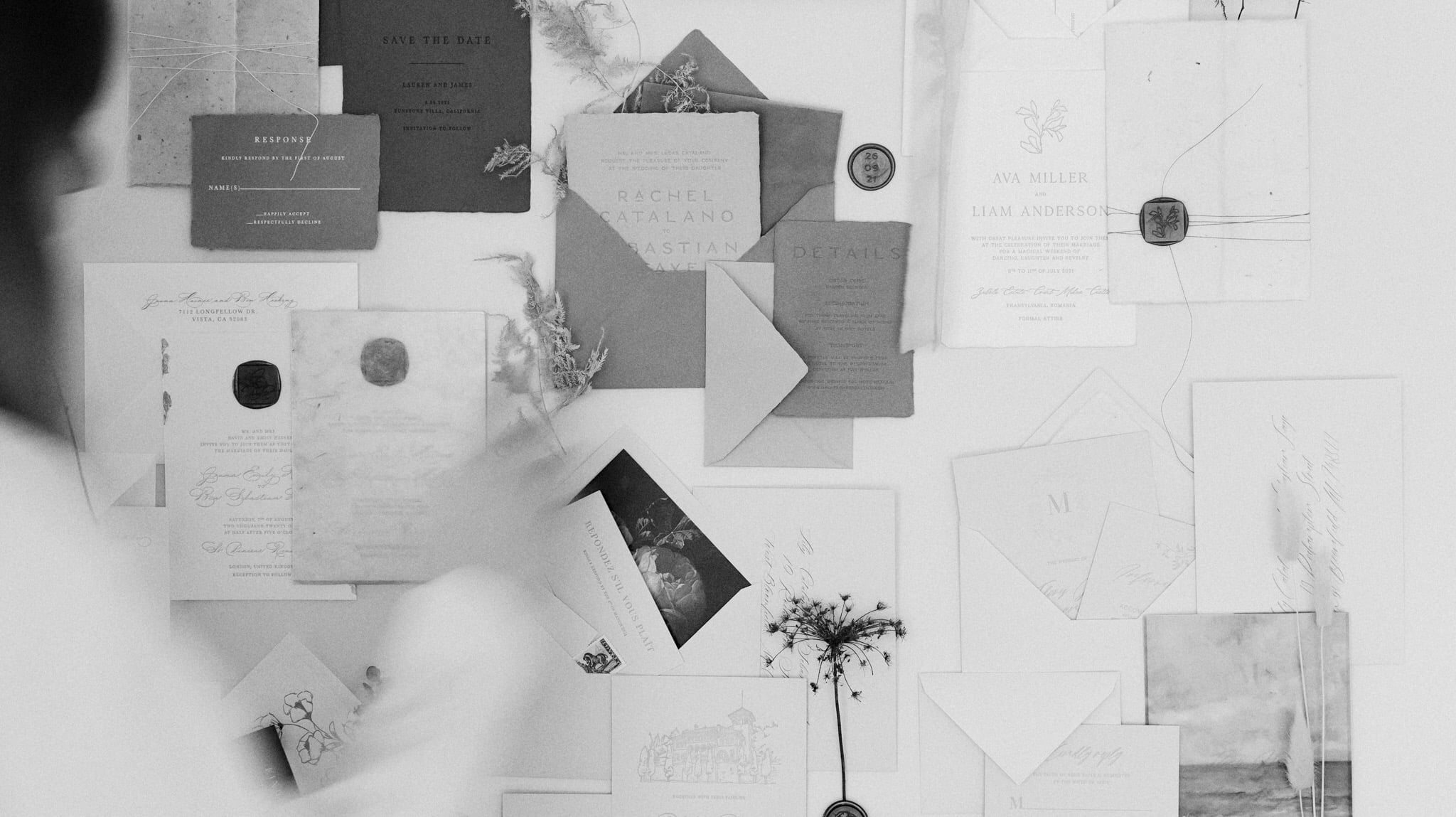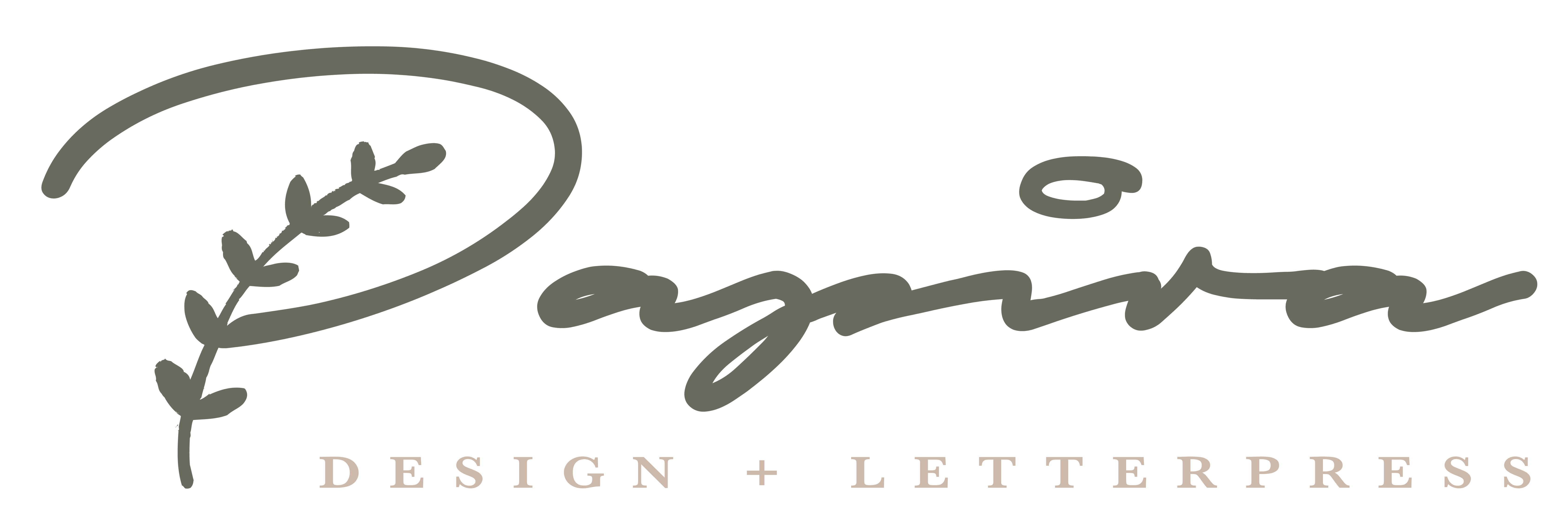
21 Jun The Right Printing Method For Your Wedding Invitations
If you’ve landed here, well, chances are you’ve recently gotten engaged and are embarking on the wonderful world of wedding planning. Congratulations and welcome! Considering you stumbled upon this article, I’m guessing it’s time to get started on all things paper, and with that comes a few things you should know about the printing processes that go along with that.
You may very well have heard terms like “Letterpress,” “Blind Emboss,” or “Foil Press” that left you confused or thinking to yourself, I better remember to google what that even means. If this is the case, you’ve come to the right place! I plan to break down the most common printing methods used with wedding invitations so you can make an informed decision.
Digital Printing
The first option is digital printing. This printing method is by far the most popular and widely used. This style of printing involves taking an entire image and printing it digitally onto the paper of your choice. This is accomplished through the use of ink (via inkjet printing) or toner (with laser printing). Digital flat printing is used by the majority of common household printers. For intricate and colorful designs, digital flat printing is the best method. With digital flat printing, you can print all the colors all at once, making this method not only attractive but also functional.
The most suitable paper for this type of printing is our 300 gsm card stock.
PROS AND CONS
- Colors that are beautiful and crisp for intricate and complex designs.
- Excellent saturation for the use of a variety of colors or large areas of color.
- The quickest and most cost-effective printing method.
- If you want to achieve metallic colors like gold or silver, this is a limitation.
Letterpress Printing
Following that is the classic printing method of letterpress, which is our favorite here at Papira. This type of printing is essentially how printing began. But you’re not here to learn about history (You can find out more about what letterpress printing is, here). Excuse me while I go ahead and explain how it’s used today to make wedding invitations look spectacular.
Letterpress printing employs a printing press to apply pressure, a custom plate of the design, hand-mixed ink to match a color swatch, and paper. At Papira we utilize our very own Heidelberg Windmill antique press. The paper is loaded onto the press, one at a time, as the plate is rolled with ink and stamped down onto the paper, leaving a visible and tactile impression of the design. This is a preferred printing method for elegant social events due to the artisan process and the stunning impression left.
The most suitable paper for this type of printing is our 600 gsm card stock or our handmade paper.
PROS AND CONS
- Your guests will be impressed by the handmade and artisan quality.
- With high-quality inks, letterpress can produce crisp, bold printing.
- Each color necessitates the creation of its custom plate for an additional run-through on the press. This makes the printing process more expensive than standard digital printing, especially when multiple colors are used.
- Letterpress printing takes longer than standard digital printing due to the intricate process. This is only a con when you are short on time.
Foil Press Printing
Next up is Foil Press Printing. Much like letterpress printing, this printing method uses a press to apply pressure and a custom plate to apply the design to paper. The key difference is that rather than using ink on the plate, a metallic sheet is used to stamp the foil onto the paper. The result is the same lovely impression as with letterpress, but with stunning metallic or matte foils instead of ink. Gold, silver, copper, and white are the most commonly used colors.
All types of paper are suitable for this printing method, our 300 gsm card stock, 600 gsm card stock, and our handmade paper.
PROS AND CONS
- Capability to create truly metallic impressions in a wide range of colors and shades.
- Use in conjunction with Letterpress or Digital Printing.
- Your guests will be wowed by the handmade artisan quality.
- Foil printing is more expensive and takes longer than other printing methods due to the labor-intensive printing process. Allow for space in your budget if you want to include foil, and start early so you don’t run out of time.
Blind Impression – Embossing
Blind Impression is another method that is similar to Letterpress and Foil press. Embossing is the process of making a raised impression on paper. A “blind” impression is so named because no ink is used and it is only intended to create a tactile impression on the paper.
Embossing changes the surface of the paper by creating a three-dimensional or raised effect on specific areas. This method necessitates the use of two plates: one raised and one recessed. When the paper is pressed between the plates, the raised plate forces the paper into the recessed plate, resulting in the embossed impression It is an elegant and understated way of adding something special to an invitation.
All types of paper are suitable for this printing method, our 300 gsm card stock, 600 gsm card stock, and our handmade paper.
PROS AND CONS
- A lovely way to incorporate subtle or understated design elements into your invitations.
- It is more expensive than other print methods due to the use of multiple plates.






No Comments